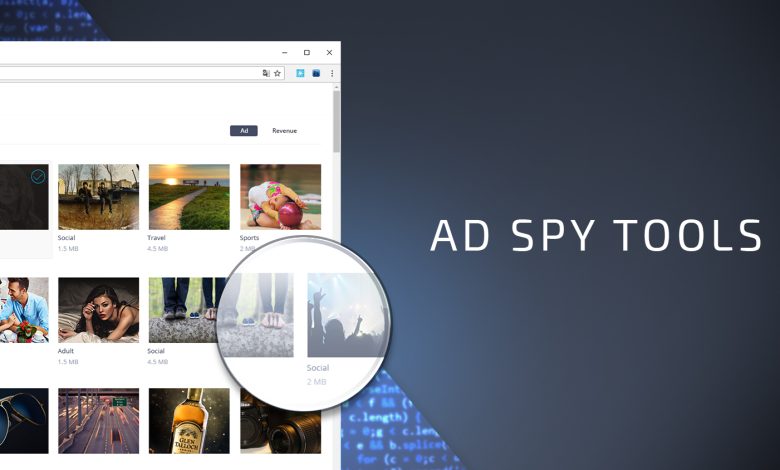How to Choose the Best Ad Spy Tool for Your Business: A Buyer’s Guide

Ad Spy Tool: In the competitive and rapidly evolving landscape of digital advertising, staying ahead of the curve is paramount. One strategic way to keep a finger on the pulse of the digital market is by using ad spy tools. These tools grant businesses insights into their competition’s advertising strategies, better positioning them to tweak their own tactics for optimal performance.
However, selecting the right ad spy tool can be a daunting task, given the plethora of options available and the varying features they offer. In this comprehensive guide, we’ll walk you through the process of choosing the best ad spy tool for your business, ensuring you get the most out of your investment.
Understanding Your Ad-Spying Needs
Before leaping into the vast sea of ad spy tools, it’s important to identify what you hope to achieve with such a tool. Begin by setting clear objectives for your ad spying efforts. Are you looking to simply keep an eye on competitors’ ad creatives, or do you require deep analytics to understand ad positioning, engagement, and historical data?
It’s also critical to consider the scale of your advertising efforts. Small businesses with limited ad campaigns might need different functionalities than a large enterprise handling complex, multi-platform ad strategies.
Defining Clear Goals
When selecting an ad spy tool, ask yourself:
- What type of ads do I want to monitor? (Search, Display, Social, etc.)
- Do I need historical analysis?
- What level of detail do I need?
- How many competitors do I want to track?
By defining these needs, you’ll make the decision-making process more focused and effective.
The Must-Have Features
Certain features are non-negotiable when it comes to ad spy tools. Look for tools that provide:
Comprehensive Data Coverage
A good ad spy tool should offer a broad range of ad coverage across multiple platforms. It should track and classify ads by industry, medium, format, and other key parameters. This breadth ensures you’re not just seeing a slice of the advertising reality, but the whole pie.
Advanced Search Filters
The ability to filter through the collected data quickly is invaluable. Advanced search filters allow you to pinpoint specific aspects of ads, such as keywords, landing pages, or the type of ad (video, carousel, static image, etc.), saving you time and providing more targeted observations.
Historical Data and Ad Evolution
Examining how ads have evolved over time and the strategies your competitors have iterated on can provide unprecedented insights. Look for tools that offer historical data and a timeline of ad campaigns to spot trends and changes in strategy.
User-Friendly Interface
No matter the depth of features, a tool is only as effective as it is usable. A clean, intuitive user interface makes the ad spying process efficient and the data more accessible for analysis.
Real-Time Ad Monitoring
Ideally, your ad spy tool can capture and update previously unseen ads in real time. This ensures you’re not just seeing current ads but are one step ahead, anticipating and responding to the shifts in your industry.
Integration Capabilities
Your ad spy tool should fit seamlessly into your existing marketing toolkit. Compatibility with major advertising platforms, CRMs, or analytics tools is a significant advantage, as it streamlines your workflow and provides a more holistic view of your campaigns.
API and Third-Party Integration
Look for tools that offer open APIs and support integration with popular platforms and tools. This will allow for customized data sets, automation, and the layering of ad data over your existing analytics for a comprehensive view of your marketing performance.
Consider Your Budget
Cost is a key factor, particularly for smaller businesses. However, cheaper doesn’t necessarily mean less functional. It’s vital to weigh the features of a tool against its price to ensure you’re getting the best value for your situation.
Pricing Models
Tools typically offer monthly or yearly subscriptions, often with tiered pricing based on usage or features. Some tools might even offer pay-as-you-spy models. Understand the pricing structure and ensure it aligns with your budget and expected usage.
Free Trials and Demos
Before committing to a tool, take advantage of free trials or demos. These offer a risk-free way to evaluate the tool’s effectiveness and its fit with your business’s needs and operations.
The Human Element
Behind every tool are teams committed to their product’s performance and user success. The level of customer support, available resources, and the tool’s community can greatly impact your experience and the tool’s usefulness to you.
Customer Service and Training
Opt for a tool with robust customer service options, including live support and training. A dedicated account manager can guide you through the tool’s features and offer tips for maximum utility.
Community and User Feedback
Research user reviews and seek out communities dedicated to ad spy tools. The experiences of others can offer valuable insights into the tool’s practical use and the kind of support you can expect.
Case Studies
Real-world examples can be a powerful guide. Investigate how businesses like yours have leveraged ad spy tools to improve their advertising strategy and ROI.
Success Stories
Review success stories of businesses that share details about how the tool has helped improve their ads, conversions, or market positioning. These can be inspiring and offer you a glimpse into what’s possible.
Vertical-Specific Tools
Certain ad spy tools are tailored to specific industries or ad platforms. Analyze how these vertical-specific tools might align more closely with your business’s ad spying requirements and end goals.
The Final Decision
Combine all the insights gained from the above steps to select the ad spy tool that best aligns with your business needs, budget constraints, and existing marketing infrastructure.
Creating a Comparison Matrix
Create a matrix to compare the top contenders. Include features, pricing, user experience, integrations, and support availability. Rate each tool against these categories, and weigh them according to your business’s individual needs.
Making The Choice
Ultimately, the best research ad spy tool for your business will be the one that offers the most critical features that directly support your advertising goals, within a budget you can comfortably sustain. Make sure to plan for the future, considering potential growth in your advertising endeavors.
Choosing an ad spy tool isn’t a one-size-fits-all decision. It’s a nuanced process that requires you to consider your objectives, your current setup, and the support you’ll need to leverage the tool effectively. By following the steps outlined in this buyer’s guide, you’ll be well on your way to making a savvy, informed choice that could significantly impact the success of your digital advertising campaigns.









